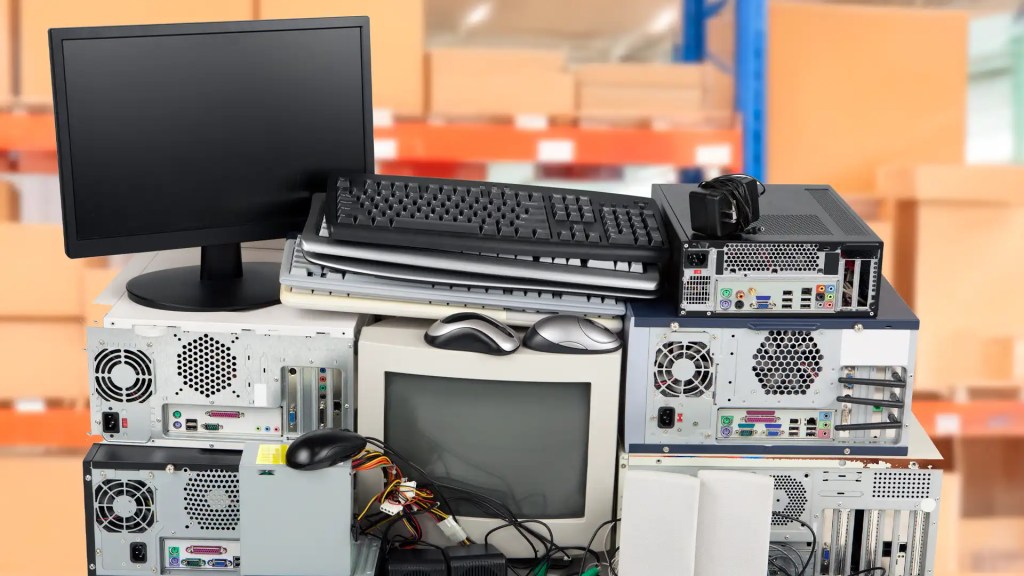Article Read Time

Outdated technology is everywhere. Did you know that, on average, we only keep our computers for three to five years? That means that throughout your life, you’ll own between 16 and 26 computers.
Have you ever tossed, handed down, or sold an old cell phone or laptop? Once our devices reach the end of their lifespan, we can become preoccupied with getting a replacement as soon as possible. Once you get rid of it, you likely never think about that particular device again. It’s out of sight, out of mind.
Why Proper Device Disposal of Outdated Technology Matters
Every time you change devices, you could be putting your data at risk.
Many discarded electronics, particularly those with outdated software or unpatched vulnerabilities, are at risk of being exploited by cybercriminals. Threat actors can extract information even if you think you’ve deleted the files, and they have ways of retrieving seemingly lost data. This is particularly concerning for outdated technology containing sensitive personal data, even after being disposed of properly.
How to Safely Get Rid of Old Technology
Disposing of outdated technology securely will prevent threat actors from accessing it and extracting your personal information. For exceptionally vulnerable devices, like smartphones, laptops, hard drives, and even routers, you must take safe steps to ensure your data is irretrievable.
- Back-Up Your Data: Before you dispose of anything, back up all your essential data. Use cloud storage or an external hard drive to save files you want to keep or transfer to your new device.
- Factory Reset the Device: For most consumer devices, performing a factory reset can help erase personal information. Remember that a factory reset alone is not enough for more sensitive data because some data can still be recovered with specialized software.
- Secure Data Wipe: For a more thorough wipe, use data erasure software that overwrites the data several times (at least 3-7 passes) to make recovery nearly impossible.
- Remove and Destroy Storage Media: For hard drives, SSDs, and any device that stores data, physically destroy the drive. If you’re really concerned about security, physically destroying the storage device is the most effective way to ensure data cannot be recovered. You can either drill holes in the drive or use a professional service to shred it.
- For SSDs: Since they use flash memory, simply wiping data might not fully eliminate traces of data due to the way they store information. If possible, use a specialized SSD wipe tool or destroy the SSD physically.
- Remove or Recycle Batteries Properly: Some devices (e.g., laptops, tablets, smartphones) have batteries that require proper disposal. Many electronics retailers, tech stores, and local recycling centers accept old batteries for safe disposal.
- Wipe or Factory Reset Other Devices: Don’t forget about devices like routers, smart TVs, and printers. For Wi-Fi routers, reset to factory settings, remove any custom configurations (especially admin passwords), and, if possible, wipe any stored data. For printers that store documents or information on internal hard drives, be sure to reset them and clear any stored data.
If your outdated technology is still in working condition and you’re looking to recycle or donate it, consider the security of the place to which you are taking it.
- Certified E-Waste Recycling Centers: These centers have proper equipment and protocols for handling sensitive data. Ensure the center has certifications like R2 (Responsible Recycling) or e-Stewards, which meet environmental and security standards.
- Donation Services: If you’re donating, verify that the service wipes devices before passing them on to others. Some companies specialize in refurbishing tech while ensuring data security.
- Consider Professional Data Destruction Services: If you have particularly sensitive data (e.g., for business purposes), you might want to consider a professional data destruction service. These services ensure destruction of all data on a device, and they often provide a certificate of destruction for your records.
- Check for firmware or software tracers: Sometimes, data can remain in device firmware or software, such as for routers or networked devices. If you have access to the device’s firmware, you might want to reset or overwrite the software to ensure data doesn’t linger.
By following these steps, you can help ensure that your old tech is securely discarded so that it can’t be accessed or exploited by anyone who comes across it afterward. The next time you upgrade your tech, remember to dispose of your old devices properly. Cyber thieves don’t need your login password and backup information to steal data from your discarded devices.
By taking care to wipe and dispose of your outdated devices properly, you can significantly reduce your risk of falling victim to a data breach.
Commonwealth Sentinel is here to help you navigate the ever-evolving and growing cyber security threats we all face. We can evaluate your existing IT security and work with your team to improve it.
At Commonwealth Sentinel, we stay focused on cyber security so you can focus on other things. Contact us today or sign up for a free consultation.
